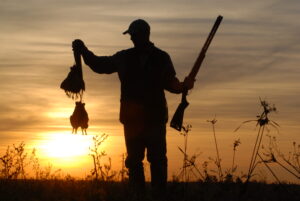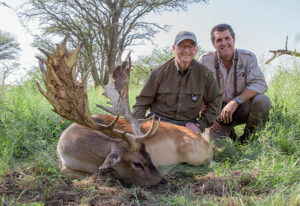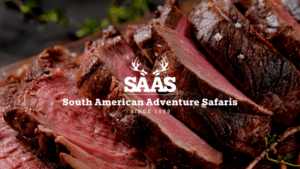Red Stag vs Moose Hunting
Overview of Red Stag Hunting
Red Stag are known for their large racks and the incredible areas they inhabit. In fact, Red Stag have the largest antlers in the world relative to their body size.
For many hunters, it is a dream to travel to regions like Europe, New Zealand, and South America (Argentina) to harvest one of these magnificent animals. Their elusive nature and the breathtaking landscapes add to the adventure.
Most hunting is done in the fall during the rut, also known as “The Roar”. The Roar must be heard and experienced to fully appreciate its excitement.
La Pampa, Argentina
Season: March – July

- 6 Nights and 5 Hunting Days
- One free range Red Stag trophy (no limit on score)
- Full board lodging – Open Bar
- One-on-one guiding
Patagonia, Argentina
Season: March - April

- 5 Nights and 5 Hunting Days
- One free range Red Stag trophy (no limit on score)
- Full board lodging – Open Bar
- One-on-one guiding
- Hunting License
- Gun rental available including ammo
Patagonia, Argentina
Season: March – May

- 5 Nights and 5 Hunting Days
- One Gold Medal Red Stag trophy (400-440 SCI class)
- Full board lodging – Open Bar
- One-on-one guiding
- Hunting License
- Gun rental available including ammo
La Pampa, Argentina
Season: March – July

- 6 Nigths and 5 Hunting Days
- One Gold Medal Red Stag trophy (400-420 SCI class)
- Full board lodging – Open Bar
- One-on-one guiding
- Gun rental available including ammo
Red Stag & High Volume Dove Hunting
The Season: March to July

- 9 nights / 7 Hunting days
- 4 full days of big game hunting
- 3 full days of wingshooting
- Hunting License (game and birds)
- Full board lodging – Open Bar
Overview of Moose Hunting
Moose hunting is a thrilling pursuit that attracts hunters to the northern regions of North America and parts of Europe. Moose are the largest members of the deer family and are known for their massive size and impressive antlers. Moose hunting typically occurs during the fall rutting season when bulls are most active and vocal, making it an exciting time to try and call them in.
Habitat and Distribution
Both animals have wide geographic regions they are found in. Moose are only found in the northern hemisphere, while Red Stag may be found in both.
Typical Habitats of Red Stag
Red Stag typically inhabit dense forests, grasslands, and mountainous regions. They thrive in diverse environments, from the Scottish Highlands to the rolling hills of New Zealand and the vast ranges of Argentina. Their adaptability to various habitats makes them widespread.
Most of the places, especially in Argentina, they live in breathtakingly beautiful areas. Hunting in excellent scenery adds to the overall experience.
Typical Habitats of Moose
Moose are found in forests across the northern hemisphere in many countries and regions. These include the United States, Canada, Scandinavia, and other European countries. They prefer habitats with a mix of forested areas and open spaces such as meadows, marshes, and rivers.
Moose are highly adapted to cold environments and are often found in regions with heavy snowfall. They are strong swimmers and can often be found near bodies of water, where they feed on aquatic vegetation.
Physical Characteristics and Behavior
Both animals are part of the deer family, and although they do share some similarities Red Stag and Moose are very distinct animals.
Distinguishing Features of Red Stag
Red Stag are renowned for their majestic antlers, which can form large, multi-branched racks. Their antlers are the largest in relation to body size in the world, and often have unique structures.
They have a reddish-brown coat that thickens and darkens in winter. In Argentina, these animals can reach especially impressive sizes. Stags (which are the males) are also known for their distinctive, guttural roar during the rutting season. Females are known as hinds.

Distinguishing Features of Moose
Moose are the largest members of the deer family, with males (bulls) weighing between 1,200 and 1,600 pounds. There have been reports of even larger bulls being taken. They have long legs, an overhanging muzzle, and a distinctive flap of skin known as a dewlap or "bell" under the throat.
Moose have large, open shaped antlers, which can span up to 6 feet across. The antlers can vary greatly in size and shape depending on the region and the specific animal. Their coat is dark brown to black, providing excellent camouflage in their forested habitats.
Behavioral Differences
Red Stag and moose display different behavioral patterns, especially during the rut or roar. Red Stags are known for their loud, guttural roars, used to attract females and deter rivals. They are highly territorial during this period. Moose communicate through vocalizations like grunts and moans, and males often engage in dramatic antler clashes.
Moose are generally solitary except during the mating season, whereas Red Stags can be seen in small groups.
Hunting Techniques and Strategies
Hunting techniques do have some overlap, and both species present challenges to hunters.
Effective Methods for Red Stag Hunting
Effective Red Stag hunting methods include stalking and calling, often requiring patience and stealth. Hunters need to navigate diverse terrains and use natural cover to get close. During the rut, mimicking the Stag’s roar can attract dominant males.
Effective Methods for Moose Hunting
Moose hunters utilize several methods including hunting from a stand and trying to call in bull. Bulls can be very aggressive and eager to find a mate during this time of year. Hunters may be able to bring a moose to them using a cow call.
Spot-and-stalk requires patience and a good understanding of moose behavior, as hunters move quietly through their habitats to get close.
Seasonal Considerations
Because of where both Red Stag and Moose live, it is important to understand the weather and climate of the area you will be hunting.
Both Red Stag and moose hunting are most successful during their respective rutting seasons. For Red Stags, this is typically in the fall, during "The Roar". Moose hunting is also best in the fall when bulls are more vocal and responsive to calls. Hunters must be prepared for varying weather conditions and be aware of local hunting regulations to ensure a legal and ethical hunt.
Hunting Weather by Season in Argentina
Table of Contents: Hunting in Argentina Jan – Mar (U.S. Late Winter/Spring) Hunting in Argentina Apr – June (U.S. Early Summer) Hunting in Argentina Jul – Sept (U.S. Late Summer) Hunting in Argentina Oct – Dec (U.S. Fall/Early Winter) Past Year’s Weather Recap This Upcoming Year’s Weather Predictions Book with South American Adventure Safari Argentina…
Gear and Equipment
Due to the regions these animals call home, good gear can be essential to the realization of a hunt. The ability to spot, stalk, move, and stay comfortable can mean the difference between a successful hunt or not.
Recommended Gear for Red Stag Hunting
For Red Stag hunting, recommended gear includes a high-caliber rifle, quality optics, camouflage clothing, and sturdy boots. Hunters should also carry essential survival gear, such as GPS, first-aid kits, and weather-appropriate clothing.
Our team at SAAS can help ensure you bring everything you will need for a successful and enjoyable hunt.
Recommended Gear for Moose Hunting
Recommended gear for moose includes a high-powered rifle with suitable caliber for large game, quality optics for long-distance spotting, and durable, waterproof clothing.
Sturdy, insulated boots are essential for navigating rough, wet, or snowy terrain. Bringing a good quality game cart or sled can be useful for transporting the heavy meat.
Best Guns & Caliber to Hunt Red Stag
When choosing a gun for any particular type of hunting, it is important to consider the body mass of the game and the distance you will be shooting from. On average, an adult red stag usually weighs around 440 pounds. Their antlers make up for an average of 12-14 pounds of their total weight. Table…
Trophy Quality and Meat Yield
Red Stag and Moose both have excellent meat that many people greatly enjoy. They also both have impressive antlers although they may look very different.
Evaluating Trophy Red Stag
Trophy Red Stag are evaluated based on antler size, symmetry, and the number of points. In Argentina it is not uncommon to harvest an animal in the 300-320 SCI class for free range and over 400 for the gold medal areas.
A mature Stag with a well-formed, large rack is highly prized. Factors such as body size and condition also play a role in trophy quality.
Evaluating Trophy Moose
Trophy moose are judged primarily by the size and shape of their antlers. A high-scoring trophy will have wide, broad palms with numerous points, heavy beam mass, and good symmetry. Body size and the overall health of the animal also contribute to its trophy quality. Mature bulls with large, well-formed antlers are highly sought after by hunters.
Meat Yield and Culinary Uses
Both Red Stag and Moose provide high-quality, lean meat. Their venison is prized for its rich flavor and versatility in cooking. Proper field dressing and meat care are essential to preserve the quality of the yield for culinary use.
How to Prepare Red Stag After a Hunt
The meat from a red stag is venison, which is lean red meat with a rich and clean taste and no gamey flavor. It is high in protein and iron but low in fat and cholesterol, making it recognized by health and fitness professionals.
Why Choose South American Adventure Safaris for Red Stag Hunting (conclusion)
South American Adventure Safaris offers unparalleled experiences for Red Stag hunting. We have several hunting options in different areas giving us the ability to match any clients needs.
With access to prime hunting grounds and expert guides, hunters are ensured a memorable and successful hunt. Their commitment to conservation and sustainable practices makes them a top choice for ethical hunters.




